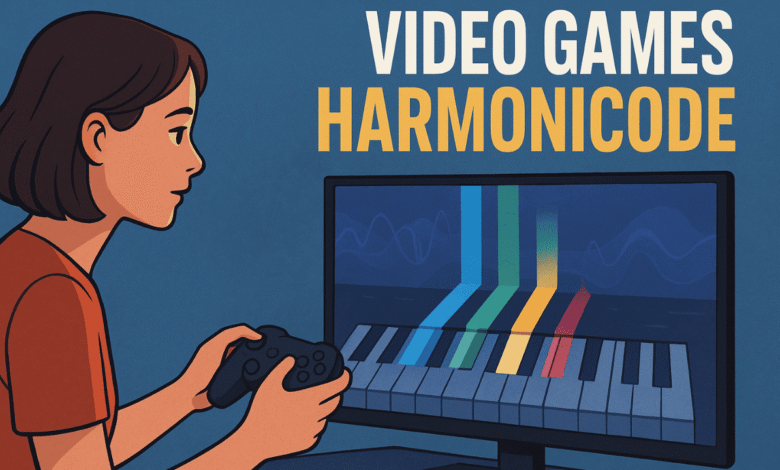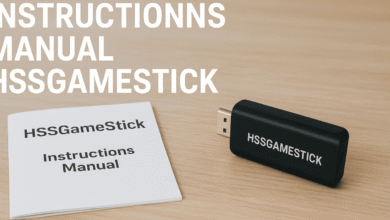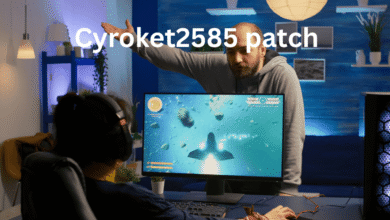video games harmonicode: a complete guide to music-driven play, learning, and design

Music has always been part of gaming, but there’s a new wave where music isn’t just background noise; it is the mechanic, the puzzle, and the reward. That idea sits at the heart of video games harmonicode, a term used to describe experiences where melody, rhythm, harmony, and interaction are woven into the core of play.
At its core, video games harmonicode turns musical structure into a playground. Notes become inputs, chords become keys that unlock levels, and rhythm becomes the timing window that makes a jump, an attack, or a puzzle solution feel right. Whether you are a player, a parent looking for purposeful screen time, or a developer searching for fresh design vocabulary, video games harmonicode offers a clear path into immersive, skill-building fun.
understanding video games harmonicode
The phrase video games harmonicode refers to games and interactive tools that use musical building blocks as primary gameplay systems. These experiences ask you to respond to tempo, recognize pitch, assemble harmonies, or create short motifs that influence what happens on screen.
Unlike typical rhythm titles where you mostly chase a scrolling track, video games harmonicode treats musical logic as cause and effect. Pressing a sequence that forms a chord may open a door. Matching a bassline’s contour could raise a bridge. Holding a sustained note at the right time might grow a tree in a meditative sandbox. You are not just following music—you’re shaping it and being shaped by it.
where the idea comes from
Classic experiments laid the groundwork. Early genre-blenders proved that firing a projectile could also be a note in a scale. Later, action games asked you to sync movement and attacks to a beat. Meditative titles turned collecting objects into a way of painting sound. Modern learning tools now borrow these ideas to teach finger placement, reading notation, timing, and ear training, all inside playful feedback loops. Together, those threads form the practical DNA of video games harmonicode.
how the core mechanics work in video games harmonicode
In most video games harmonicode experiences, the game maps musical concepts directly to interaction. You might see a staff or piano roll, colored lanes, or spatial cues that correspond to pitch and rhythm. Success isn’t only “hit the note”; it’s “understand the musical pattern and apply it.” Here are the common pillars.
rhythm and timing windows
The game offers a tempo and subdivides it into beats or steps. You act inside timing windows: early, perfect, or late. Good design keeps these windows consistent or slightly elastic, so you can feel a groove rather than fight a metronome.
pitch, harmony, and contour
Inputs may be laid out like a keyboard, a guitar fretboard, or a simple set of buttons mapped to a scale. Patterns based on stepwise motion, arpeggios, or chord progressions help you connect what you hear to what you do.
dynamic music and responsive worlds
As you play, the soundtrack changes. Adding a countermelody, muting a drum group, or modulating to a new key can mirror your progress. Worlds react—plants bloom when harmonies resolve, doors open when cadences land, enemies weaken when you repeat a motif correctly.
feedback that teaches
Instant audio-visual feedback makes learning stick. Miss a note and you hear a gentle detune or see a soft color shift. Nail a phrase and you unlock a flourish, confetti of overtones, or a satisfying resonance. The loop gently pushes you to try again without feeling punished.
a simple flow you might encounter
- Hear a two-bar motif and watch it visualized.
- Echo it using your controller, keyboard, or MIDI device.
- The world responds to your accuracy by revealing a path or granting resources.
- A new variation appears, slightly more complex in contour or rhythm.
- By the end of the level, you’ve improvised a short piece that also solved the area’s puzzle.
learning and wellness benefits of video games harmonicode
This category isn’t just fun; it’s useful. Because the feedback is immediate and multisensory, the learning curve feels playful rather than stressful. Educators find video games harmonicode helpful for building core musical literacy and transferable skills.
Key benefits include:
- Rhythm awareness and internal pulse, developed through steady exposure to tempo and subdivision
- Ear training through repetition, call-and-response, and contour recognition
- Fine motor coordination via instrument-like inputs or pattern sequences
- Focus and attention, supported by clear goals and reinforcing audiovisual cues
- Confidence, as players experience small wins that stack into larger musical achievements
- Stress relief, thanks to meditative loops, soft feedback, and soothing soundscapes
Wellness-oriented versions emphasize open-ended exploration. Instead of high-stakes accuracy, you play with tone color, ambience, and motion. The world reacts gently to your gestures, turning practice into a calming ritual.
design principles for building video games harmonicode experiences
For developers and educators, a few principles keep projects grounded and joyful. When crafting a video games harmonicode project, focus on clarity first—then style.
- Make the musical goal obvious. Show where the beat lives and how pitch is arranged.
- Keep timing windows humane. Slight tolerance helps players find flow.
- Layer complexity. Start with contour or rhythm alone, then combine them.
- Reward near-misses. Encourage with partial credit and soft corrections.
- Celebrate musicality. Allow ornamentation or improvisation to count as success, not noise.
- Connect sound to consequence. Every good note should nudge the world in a visible way.
- Provide practice spaces. Short loops, slow-down options, and phrase isolation build mastery.
- Respect different inputs. Keyboard, gamepad, touchscreen, or instrument controllers should all feel fair.
tools, workflows, and content pipelines
You don’t need a recording studio to begin. Many creators combine a game engine with a lightweight audio system and a notation or piano-roll view. MIDI support helps map inputs to pitches, while simple scale and chord generators reduce friction. For content, short modular phrases make it easier to remix on the fly without jarring transitions.
accessibility and inclusion
Good accessibility unlocks wider audiences. Consider color-blind friendly cues, subtitles for rhythmic counts, adjustable contrast, haptic feedback tied to beat, remappable controls, and difficulty sliders that independently adjust speed, density, and pitch range.
examples and inspirations around video games harmonicode
Inspirations stretch across decades. Some early titles linked shooting to melody; others made combat stronger when you stayed on beat. Meditative explorers turned sound design into a living landscape. Learning tools blurred lesson and game, letting a student follow a rolling score in a browser and slow tricky passages until they clicked. Today, many hybrids combine puzzle solving with short composing tasks, exactly the blend that fans of video games harmonicode love.
If you’re researching, look for patterns like these:
- Games where actions produce notes in a defined scale
- Levels that unlock through chord recognition or call-and-response
- Worlds that evolve based on harmonic tension and release
- Practice modes that isolate a tricky bar and loop it until it sings
Through these ingredients, developers can craft systems that feel musical even to people who have never taken a lesson. That is the quiet superpower of video games harmonicode.
practical tips for getting started with video games harmonicode
Whether you want to play, teach, or build, here’s a quick roadmap.
for players
- Start with experiences that show a clear beat indicator.
- Choose games that let you slow sections and loop small phrases.
- Use headphones for cleaner timing feedback and fewer distractions.
- Practice five minutes a day instead of one long session per week.
for parents and guardians
- Look for gentle difficulty curves and positive feedback language.
- Pair short play sessions with simple musical goals, like “keep a steady beat for 16 bars.”
- Celebrate effort and curiosity, not just accuracy.
- Encourage improvisation; let kids color outside the lines.
for teachers and mentors
- Align in-game motifs with your lesson plan (scale of the week, chord of the day).
- Use screen-mirroring and count-offs so a whole class can feel the groove together.
- Track progress with short recording snippets students can revisit.
- Build ensemble moments where multiple players control different layers of the same piece.
for developers and designers
- Prototype one mechanic well: beat keeping, interval matching, or harmony gates.
- Add expressive layers after the core loop feels satisfying.
- Offer input flexibility; let a simple keyboard emulate an instrument layout.
- Playtest with non-musicians to check clarity and reduce friction.
common challenges and how to solve them
Even polished projects hit a few bumps. Here are frequent pain points and fixes.
- Players can’t feel the beat. Add a visual metronome, stronger percussive cues, or subtle controller haptics.
- Pitch layout feels confusing. Start with a pentatonic or diatonic scale and reveal accidentals later.
- Difficulty spikes. Separate speed from density; let players slow the tempo without thinning the music too much.
- Repetition fatigue. Rotate motifs, change instrumentation, or offer short creative breaks where the player decorates a phrase.
- Performance anxiety. Use forgiving scoring, celebratory micro-rewards, and non-punitive restarts.
who benefits most from video games harmonicode
The audience is wider than you might expect.
- New learners who want to explore music without a heavy theory wall
- Lapsed musicians looking for a friendly way back into practice
- Rhythm-game fans who crave deeper musical cause and effect
- Educators seeking interactive tools for group lessons or homework
- Wellness-focused players who enjoy calm, sound-first environments
By centering music as the logic of play, video games harmonicode invites all of these groups into a welcoming loop of listen, act, and enjoy.
key takeaways
- Music can be the system, not just the soundtrack.
- Clear beat, readable pitch, and kind feedback make learning stick.
- Short, modular phrases keep content fresh and responsive.
- Accessibility features expand who can participate and succeed.
- Small daily sessions build lasting skills and confidence.
conclusion
Video games harmonicode represents a thoughtful shift in how we learn, relax, and play. Instead of treating music as background, it brings melody, harmony, and rhythm to the center of the experience and lets them drive what happens next. For players, that means a new kind of flow where your ears and hands guide the world. For teachers and parents, it turns practice into something that feels alive and encouraging. For creators, it offers a design language that is both expressive and approachable. With careful pacing, clear feedback, and a focus on joy, video games harmonicode has the potential to cultivate musical literacy, reduce stress, and deliver memorable adventures—all by letting sound lead the way.
FAQs about video games harmonicode
Q1: What are video games harmonicode?
Video games harmonicode are interactive experiences where musical elements like rhythm, pitch, and harmony form the main mechanics of gameplay. Players use musical logic to solve puzzles, progress through levels, or create soundscapes that shape the game world.
Q2: How do video games harmonicode differ from traditional rhythm games?
Unlike traditional rhythm games where you follow a preset track, video games harmonicode make music creation and manipulation part of the core gameplay. Actions such as forming chords, matching melodies, or altering harmonies directly influence the game’s outcome.
Q3: Can video games harmonicode help me learn music?
Yes. Many games in this category are designed to improve rhythm awareness, ear training, and basic music theory skills. They provide a playful and low-pressure environment for practicing musical concepts.
Q4: Are video games harmonicode suitable for beginners?
Absolutely. Many titles start with simple patterns and gradually introduce complexity, making them ideal for beginners as well as more experienced musicians.
Q5: What equipment do I need to play video games harmonicode?
Most games can be played with a standard keyboard, game controller, or touchscreen. Some also support MIDI keyboards and other instrument-like controllers for a more authentic experience.



